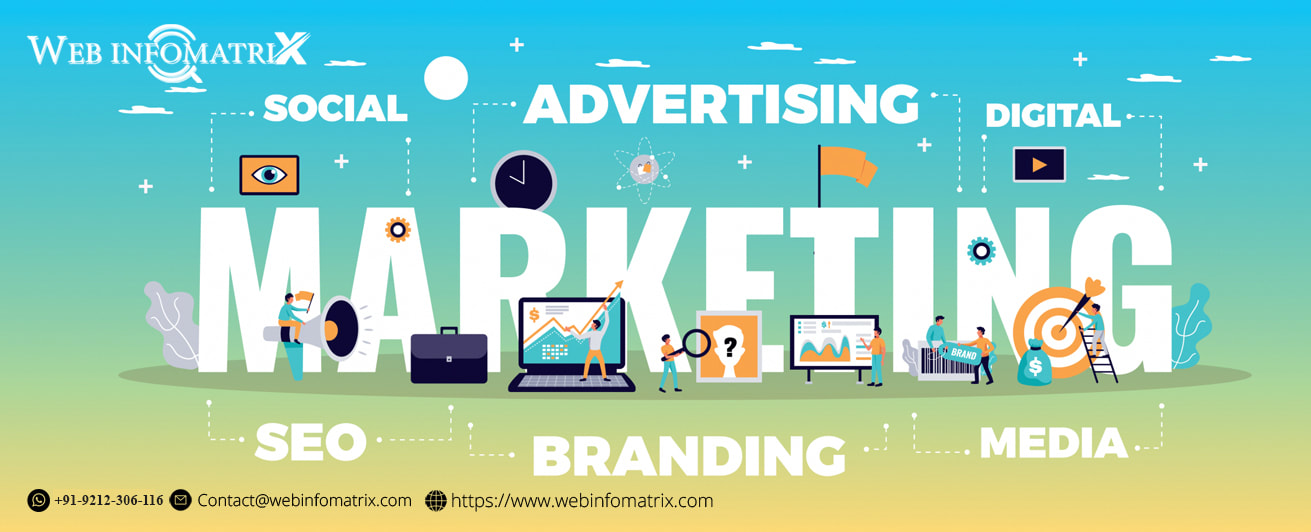What Is ChatGPT? A Basic Explainer
In recent years, artificial intelligence (AI) has made significant strides, with chatbots and conversational agents becoming increasingly prevalent.

In recent years, artificial intelligence (AI) has made significant strides, with chatbots and conversational agents becoming increasingly prevalent. Among these innovations, ChatGPT stands out as a powerful and versatile tool. But what exactly is ChatGPT, and how does it work? This article provides a comprehensive overview of ChatGPT, explaining its origins, functionality, applications, and implications for the future.
Understanding ChatGPT
ChatGPT is a language model developed by OpenAI, designed to generate human-like text based on the input it receives. The "GPT" in ChatGPT stands for "Generative Pre-trained Transformer," which reflects its underlying technology. To understand ChatGPT fully, it's helpful to break down its key components and concepts.
1. Generative Pre-trained Transformer
Generative: ChatGPT is a generative model, meaning it can create new text rather than just classify or analyze existing text. It generates responses based on patterns and information learned from vast amounts of text data.
Pre-trained: The model is pre-trained on a large corpus of text data before being fine-tuned for specific tasks. This pre-training allows ChatGPT to learn a wide range of language patterns, structures, and contexts.
Transformer: The transformer architecture is a type of neural network that has proven highly effective for natural language processing (NLP) tasks. It uses self-attention mechanisms to process and generate text, allowing it to handle long-range dependencies and understand context more effectively than previous models.
2. How ChatGPT Works
ChatGPT operates through a process involving several key stages:
Training: During the training phase, ChatGPT is exposed to a vast amount of text data from diverse sources, including books, articles, websites, and other written materials. This training helps the model learn language patterns, grammar, facts, and some level of reasoning.
Fine-Tuning: After the initial training, ChatGPT undergoes fine-tuning to specialize in specific tasks or improve its performance in certain areas. This involves training the model on a more focused dataset with specific objectives, such as improving conversational abilities or aligning responses with ethical guidelines.
Generation: When a user inputs a prompt or question, ChatGPT generates a response by predicting the most likely continuation of the text based on its training. It uses the patterns and knowledge it has learned to produce coherent and contextually relevant answers.
3. Applications of ChatGPT
ChatGPT has a wide range of applications across various domains, reflecting its versatility and adaptability:
Customer Support: Many businesses use ChatGPT to provide automated customer support, handling common inquiries and issues. It can respond to frequently asked questions, assist with troubleshooting, and provide information about products or services.
Content Creation: ChatGPT is employed to generate content for blogs, articles, social media, and other platforms. It can assist writers by providing drafts, brainstorming ideas, and even suggesting edits.
Educational Tools: In educational settings, ChatGPT can serve as a tutoring tool, helping students with homework, explaining complex concepts, and providing additional learning resources.
Personal Assistants: ChatGPT can act as a personal assistant, managing schedules, setting reminders, and providing recommendations for various activities.
Creative Writing: Authors and creators use ChatGPT for brainstorming and generating ideas for stories, poems, and other creative projects. It can assist in overcoming writer's block and exploring new narrative possibilities.
Language Translation: Although not its primary function, ChatGPT can help with language translation and understanding, providing context and explanations for different languages.
4. Strengths and Limitations
Like any technology, ChatGPT has its strengths and limitations:
Strengths:
- Versatility: ChatGPT can handle a wide range of topics and tasks, making it applicable in various contexts.
- Language Fluency: It generates text that is coherent, contextually relevant, and often indistinguishable from human writing.
- Scalability: ChatGPT can be deployed at scale, handling numerous interactions simultaneously without diminishing performance.
Limitations:
- Lack of Understanding: ChatGPT does not truly understand language or concepts. It generates responses based on patterns rather than genuine comprehension.
- Context Limitations: While it can manage context to some extent, ChatGPT may struggle with maintaining coherence in longer conversations or complex topics.
- Ethical Concerns: The use of AI in generating text raises ethical issues, such as potential biases, misinformation, and the impact on jobs and privacy.
5. Ethical Considerations
As with any AI technology, ChatGPT's use raises important ethical considerations:
Bias and Fairness: ChatGPT's responses are influenced by the data it was trained on, which can include biases and stereotypes. Efforts are made to mitigate these biases, but challenges remain.
Misinformation: The ability to generate persuasive and convincing text means that ChatGPT could be used to spread misinformation or fake news. Ensuring responsible use and verifying information is crucial.
Privacy: The interaction data collected from users can raise privacy concerns. It's important to handle and protect user data responsibly and transparently.
Job Impact: The automation of tasks traditionally performed by humans can impact job markets. While AI can enhance productivity, it also necessitates considerations about workforce transitions and new job opportunities.
6. The Future of ChatGPT
The future of ChatGPT and similar language models is promising, with several areas of potential development:
Improved Understanding: Future iterations of ChatGPT may incorporate advanced techniques for better understanding context, nuance, and complex topics.
Enhanced Personalization: The ability to tailor responses more effectively to individual users and specific contexts could enhance the utility and relevance of ChatGPT.
Ethical AI: Continued efforts to address ethical concerns, such as reducing biases and ensuring responsible use, will be essential for the positive impact of ChatGPT.
Integration with Other Technologies: ChatGPT could be integrated with other AI technologies, such as voice assistants and augmented reality, to create more immersive and interactive experiences.
ChatGPT represents a significant advancement in artificial intelligence, offering powerful capabilities for generating human-like text and performing a wide range of tasks. While it has its strengths, including versatility and language fluency, it also faces limitations and ethical challenges that must be addressed. As technology continues to evolve, ChatGPT will play a crucial role in shaping the future of AI and its applications in our daily lives.
Whether you're using ChatGPT for customer support, content creation, or personal assistance, understanding its capabilities and limitations can help you make the most of this innovative tool. As we look ahead, ongoing developments and improvements will further enhance the potential of ChatGPT and its impact on various industries and applications.
FAQs
1. What is ChatGPT?
ChatGPT is an advanced language model developed by OpenAI, designed to generate human-like text based on the input it receives. It uses a machine learning architecture known as a Generative Pre-trained Transformer (GPT) to produce coherent and contextually relevant responses.
2. How does ChatGPT work?
ChatGPT works by using a neural network called a transformer to generate text. It is pre-trained on a large dataset of text from various sources and then fine-tuned for specific tasks. When a user inputs a prompt, ChatGPT predicts and generates the most likely continuation of the text based on patterns and knowledge it has learned during training.
3. What are the main features of ChatGPT?
The main features of ChatGPT include:
- Generative Text: Ability to create coherent and contextually relevant text.
- Versatility: Can handle a wide range of topics and tasks.
- Fluency: Produces text that closely resembles human writing.
- Integration: Can be used in various applications such as customer support, content creation, and personal assistance.
4. What are some common applications of ChatGPT?
ChatGPT is used in various applications, including:
- Customer Support: Automating responses to common inquiries and issues.
- Content Creation: Generating drafts, brainstorming ideas, and editing text.
- Educational Tools: Assisting with homework, explaining concepts, and providing resources.
- Personal Assistance: Managing schedules, setting reminders, and offering recommendations.
- Creative Writing: Helping with story ideas, overcoming writer's block, and exploring new narratives.
5. What are the strengths of ChatGPT?
ChatGPT’s strengths include:
- Versatility: Ability to handle a wide array of topics and tasks.
- Language Fluency: Produces text that is coherent and contextually appropriate.
- Scalability: Capable of managing numerous interactions simultaneously.
6. What are the limitations of ChatGPT?
ChatGPT has several limitations:
- Lack of True Understanding: Does not have genuine comprehension of language or concepts.
- Context Limitations: May struggle with maintaining coherence in longer or complex conversations.
- Ethical Concerns: Issues related to biases, misinformation, and privacy.
7. What ethical considerations are associated with ChatGPT?
Ethical considerations include:
- Bias and Fairness: The potential for biases in responses based on training data.
- Misinformation: The risk of generating or spreading false information.
- Privacy: Concerns about the handling and protection of user data.
- Job Impact: The potential impact on jobs and workforce dynamics due to automation.
8. How is ChatGPT different from other AI models?
ChatGPT distinguishes itself with its use of the transformer architecture, which allows it to generate high-quality text by managing context and long-range dependencies effectively. It is pre-trained on diverse data and can handle a wide range of tasks, making it versatile compared to other models.
9. What is the future of ChatGPT?
The future of ChatGPT involves potential developments such as:
- Improved Understanding: Advances in technology to enhance context and nuance comprehension.
- Enhanced Personalization: Better tailoring of responses to individual users and specific contexts.
- Ethical AI: Ongoing efforts to address biases and ensure responsible use.
- Integration with Other Technologies: Combining ChatGPT with other AI technologies for more immersive experiences.
10. How can I make the most of ChatGPT?
To make the most of ChatGPT:
- Understand Its Capabilities: Know what it can and cannot do to set realistic expectations.
- Use it Responsibly: Be mindful of its limitations and ethical considerations.
- Integrate Thoughtfully: Incorporate it into tasks where its strengths can be leveraged, such as content creation or customer support.
Get in Touch
Website – https://www.webinfomatrix.com
Mobile - +91 9212306116
Whatsapp – https://call.whatsapp.com/voice/9rqVJyqSNMhpdFkKPZGYKj
Skype – shalabh.mishra
Telegram – shalabhmishra
Email - info@webinfomatrix.com
What's Your Reaction?


















.jpg)
.jpg)